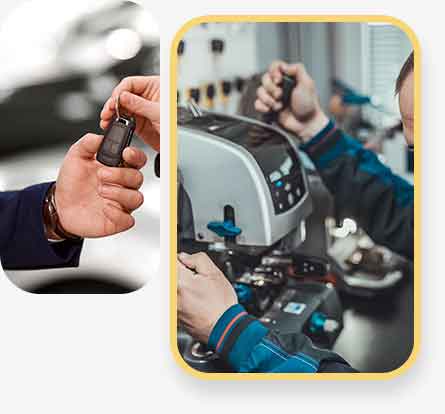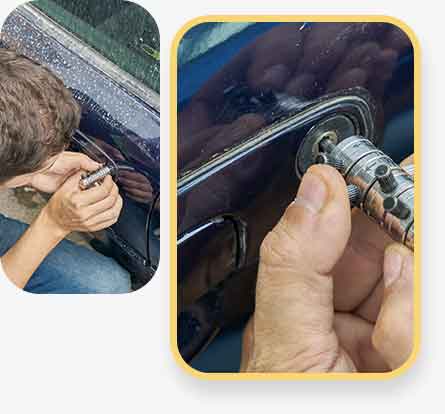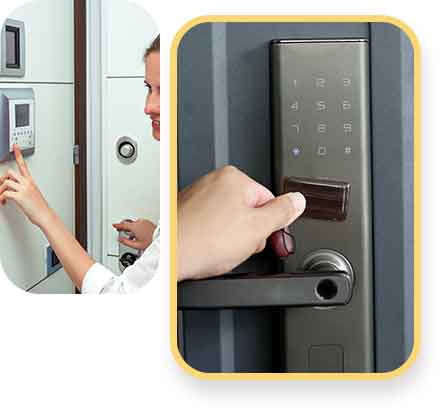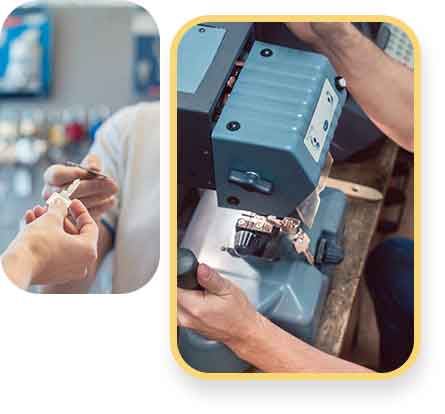Call Today: (404) 936-3323

In search of help from an adept and customer-oriented mobile locksmith? Rest assured that Smart Locksmith possesses the competence to provide locksmith services for our customers. Our skillful mobile team is ready to deliver all-inclusive mobile locksmith services with a passion for serving customers in the Atlanta vicinity. Putting customer satisfaction above all else, we eagerly look forward to resolving any locksmith issues our Atlanta clients may encounter.
Don't wait any longer. Reach out to us today to experience our service firsthand.

With our team of mobile locksmiths, you can rely on us to offer comprehensive solutions for various locksmith dilemmas, including car lockouts, lost keys, and more. As a mobile company, we understand the significance of accessibility, and we are always prepared to assist customers in the Atlanta area, whether it's for their home, office, or vehicle. We recognize the urgency of emergency situations, especially when individuals find themselves unexpectedly locked out and in need of immediate help. Safeguarding your property is of utmost importance to us, and we provide efficient services, such as master keys, keyless locks, key programming, lock replacements, VAT keys, key duplication, lock repairs, access control setup, and more.
Imagine facing a lockout situation in your workplace, residence, or vehicle in the Atlanta area. In such a scenario, you can count on our mobile locksmiths to be there for you. At Smart Locksmith, our mobile team is fully capable of safes, locks, handling deadbolts, access control systems, security camera installations, and other locksmith dilemmas. As mobile locksmiths, we come directly to our customers to do the work for them. We put ourselves in their shoes, too.

We eagerly await the opportunity to offer you comprehensive lock and key services for you. We understand if you need locks replaced or if you need lockout help. Whether you require assistance in emergencies, automotive, commercial, or residential settings, we are ready to lend a helping hand. Our team is adroit when it comes to resolving lock and security-related predicaments, such as malfunctioning security systems, broken keys, lockouts, and more. Whether you need aid during a lockout situation, transponder key programming, security upgrades for your business, or another locksmith service, know that our mobile locksmiths are adroit. Feel free to reach out to us without hesitation, as we are here to rescue you whenever you need us.
We take pride in being a skilled mobile locksmith service, dedicated to becoming your solution for all lock and key dilemmas that might arise, from lockouts and broken locks to the need for lock installation and other services. Don't hesitate to schedule an appointment today with our team of mobile locksmiths and experience our service firsthand. At Smart Locksmith, providing fair rates is a fundamental aspect of our service. Whether you are situated in Atlanta, Georgia, or nearby areas and require an adept mobile locksmith team, we sincerely hope you choose us. Our commitment to our customers is unwavering. Remember to reach out to us whenever you are in need of mobile locksmith services in Atlanta, GA, or its surrounding vicinity.
If you find yourself in Atlanta or the surrounding areas, our mobile locksmith team is just a call away. Serving Atlanta, we offer 24-hour locksmith service to address any emergency locksmith dilemmas, as well as automotive, residential, and commercial locksmith services, and more.

Mobile locksmith services for residential customers in Atlanta, Georgia and the surrounding area are very important, and there is no doubt about this. For the following locksmith services in the Atlanta area, just call on us:
Our mobile locksmith team serving the Atlanta area is ready to provide full-service alarm installation. Our adept mobile locksmiths provide comprehensive full-service alarms tailored specifically for residential customers. With a focus on safeguarding homes and families, we offer alarm systems equipped with cutting-edge technology. An alarm system can certainly be beneficial. From installation to ongoing maintenance and support, our locksmiths can be called if you are looking for someone to handle every aspect of the process. Whether it's wireless alarms, smart home integration, or surveillance systems, we strive to deliver efficient locksmith solutions for our residential customers wanting to boost home security.
We’re a mobile locksmith offering automotive locksmith services in the Atlanta area. Whether you are living in or just parked in the Atlanta, GA area, you can call us for any of the following automotive locksmith services:

When you have a commercial property in the Atlanta area, locksmith services can be very important to have access to. We bring the following services to clients who are in the Atlanta area:

Our locksmith team is prepared to offer 24 hour a day services in Atlanta, Georgia and the surrounding area. Customers can call on us for efficient locksmith services, to include the following:


We are a mobile locksmith servicing Atlanta that sources parts for our locksmith services from:
Our mobile company and our locksmith services are merely a call away. We hope you select us for mobile locksmith dilemmas that come up in Atlanta. We’re mobile locksmiths who value our customers.
Our mobile locksmith company, Smart Locksmith servicing Atlanta, hopes to become who you choose for services. We are a mobile locksmith team that is adept, and serves the Atlanta, GA area.
My husband and I recently purchased a home, and needed to change the locks. We called Smart Locksmith Atlanta, and Roy came out to do the work. He was great from start to finish - picked the phone up immediately. The service was excellent, he was very professional, and he changed all of my locks very quickly without damaging any of my doors or the fancy door knobs that I picked. Highly recommended - would definitely use him again!
Lindsay Hawkins
Atlanta, GA
★★★★★
I own a home in Roswell, GA and recently had a problem with my lock. I called my usual locksmith, but they were on duty elsewhere. I found this locksmith and they were excellent. They fixed my door in no time. The work was done professionally and quickly. The technician was polite, spoke English well and worked in a clean and professional manner. I highly recommend this locksmith.
Daniel Woods
Roswell, GA
★★★★★
Would highly recommend Smart Locksmith !! Roy answered my call after hours, worked with my schedule and was on time for the appointment. He even managed to repair the broken remote that I thought I was going to have to throw away. So in the end we received a new remote, repaired an old remote and still wound up at half the price of one remote from the dealership. Couldn’t have had a better outcome and experience !!
Charles Barstow
Johns Creek, GA
★★★★★